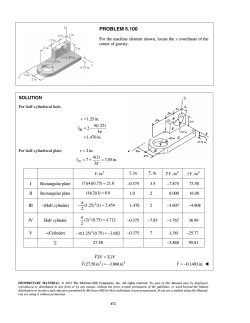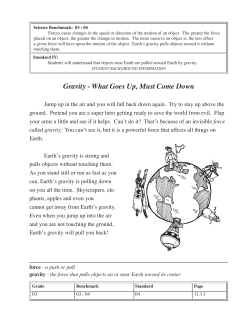
Diego Blas
Technically natural dark energy
from Lorentz breaking
Diego Blas
ÉCOLE POLYTECHNIQUE
FÉDÉRALE DE LAUSANNE
with Sergey Sibiryakov, arXiv:1104.3579, JCAP
Technically natural dark energy
from Lorentz breaking
Diego Blas
ÉCOLE POLYTECHNIQUE
FÉDÉRALE DE LAUSANNE
with Sergey Sibiryakov, arXiv:1104.3579, JCAP
(many transparencies adapted from Sergey)
“Dark energy is not only terribly important for
astronomy, it’s the central problem in physics. It’s
been the bone in our throats for a long time.”
Steven Weinberg
Dark
energy
Dark
energy missions
missions
Planck
SDSS
Euclid
DES
HETDEX
JEDI
SNAP
WFIRST
Vacuum energy?
ρΛ, obs ∼ (10−3 eV)4
If interpreted as vacuum energy...
(my) Theoretical expectations EFT
?
ρvac, th = 0
ρvac, th ∼ Λ
1019 GeV
TeV
{
4
102 GeV
2
10 MeV
Phase transitions
Vacuum energy?
ρΛ, obs ∼ (10−3 eV)4
If interpreted as vacuum energy...
(my) Theoretical expectations EFT
?
ρvac, th = 0
ρvac, th ∼ Λ
1019 GeV
TeV
{
4
102 GeV
2
10 MeV
Phase transitions
No clear relation between vacuum energy
and cosmic acceleration
Vacuum energy?
ρΛ, obs ∼ (10−3 eV)4
If interpreted as vacuum energy...
(my) Theoretical expectations EFT
?
ρvac, th = 0
ρvac, th ∼ Λ
1019 GeV
TeV
{
4
102 GeV
2
10 MeV
Phase transitions
No clear relation between vacuum energy
and cosmic acceleration
Dynamical dark energy
Assuming ρvac, th = 0 , can we do better?
✴ Technically natural
✴ Predictive power (differs from ΛCDM)
✴ Possibility to embed it in a UV complete theory
Technically natural
Acceleration related to a light degree of freedom:
LQ−ess
for DE
BUT
(∂µ φ)2
m2 φ 2
=
−
2
2
m � H0
2
δm =
present
Hubble rate
∼ gM 2
However: when an additional symmetry appears for
m→0
δm ∝ m
Hierarchy between m and M is technically natural
PseudoGoldstone DE
✦ Small mass protected by shift symmetry
φ �→ φ + C
- Large expectation values
�φ� � MP
- Almost indistinguishable from
Λ
Derivative interactions
Higher derivatives
�
LK−ess = K (∂µ φ)
�
2
(∂µ φ)2
(∂µ φ)4
=
+
+
.
.
.
2
2Λ2
Determines both the cut-off and ρΛ
Extremely low cut-off!
New ideas seem necessary!
New ideas seem necessary!
Breaking Lorentz invariance
Hořava Gravity
Einstein-aether
Digression: Status of Hořava gravity
Hořava Gravity
Non-renormalizability of GR
Toy-model: perturbative behavi
�
�z �
�
�
�z
UV �completion
−∆
φ
−∆
2
2
L = φ −∂0never
+∆ + ∆leaving
φ+
−∂0 +∆ + ∆
perturbative
2
M∗
MP
M∗2
�
��
��
QFT � �
Of
interaction/free
Oi
Of
Oi
2 ←�→
2 UV 6
4
IR
ω − k − k /M∗
IR
UV
dh = 0
1
d
h = 1
∗ M P
M
E
Hořava Gravity
•
Breaking Lorentz invariance: Broken Diffeom.
New invariance: foliation preserving Diffeom.
i
i
t → t˜(t)
j
x �→ x
˜ (x , t)
xi
t = t1
t = t0
Absolute time and space intervals
ds2 = gµν dxµ dxν = N 2 dt2 − γij (dxi + N i dt)(dxj + N j dt)
Hořava Gravity
ds2 = gµν dxµ dxν = N 2 dt2 − γij (dxi + N i dt)(dxj + N j dt)
Hořava Gravity
ds2 = gµν dxµ dxν = N 2 dt2 − γij (dxi + N i dt)(dxj + N j dt)
∂γij
Kij ∼
∼ ω γij
∂t
(3)
i
R jkl
2
∼ k γij
∂N
∼ ki N
i
∂x
GR Lagrangian can be extended to allow dh = 0
�
√
2
ij
�
ij 2
�(3)
�
2
L = MP N γ Kij K − λ (γij K ) −ξ R − α (∂i log(N )) +
�
��
�
∂02
Low energy
High energy
∆
... +
(Renormalizable)
M�4
2(3)
λ� = ξ � = 1
GR: �
α =0
�
R
ω 2 − k2 − k6 /M∗4
Hořava Gravity: Covariant Form
• The same physics described by
∂µ ϕ
uµ ≡ √
∂α ϕ∂ α ϕ
t¯ = (1, 0, 0, 0) = ∂µ t
x
L = LEH +
√
E < M�
�
µ
ϕ = ϕ1
µ
ϕ = ϕ0
2
2
ν
Low energy�
ν µ
−g λ(∇ uµ ) + α (u ∇ν uµ ) + β ∇µ uν ∇ u
Scalar-tensor theory similar to Einstein-Aether!
ϕ
gµν
uµ u = 1 + extra term
µ
√
Cut-off scale Λ ∼ MP α
Hořava Gravity: Covariant Form
• The same physics described by
∂µ ϕ
uµ ≡ √
∂α ϕ∂ α ϕ
t¯ = (1, 0, 0, 0) = ∂µ t
KHRONON
L = LEH +
√
E < M�
�
µ
x
ϕ = ϕ1
µ
ϕ = ϕ0
2
2
ν
Low energy�
ν µ
−g λ(∇ uµ ) + α (u ∇ν uµ ) + β ∇µ uν ∇ u
Scalar-tensor theory similar to Einstein-Aether!
ϕ
gµν
uµ u = 1 + extra term
µ
√
Cut-off scale Λ ∼ MP α
Hořava Gravity: Constraints
Assumption: Matter universally coupled
(no L-violation, WEP-violation in matter sector)
→
−
r
h0i
→
−
v
→
−
−2
v ∼ 10
h00
�
PPN
i i 2
M⊙
α2 (x v )
= −GN
1−
r
2
r2
PPN
α1
M⊙ i
=
GN
v
2
r
�
Preferred frame effects
PPN
α1 = −4(α − 2β)
P P N (α − 2β)(α − (λ − 1) + 3β)
α2 =
2(λ − 1 − β)
∼ 10
−4
∼ 10
−7
Hořava Gravity: Constraints
Assumption: Matter universally coupled
(no L-violation, WEP-violation in matter sector)
→
−
r
h0i
→
−
v
→
−
−2
v ∼ 10
h00
�
PPN
i i 2
M⊙
α2 (x v )
= −GN
1−
r
2
r2
PPN
α1
M⊙ i
=
GN
v
2
r
�
Preferred frame effects
PPN
α1 = −4(α − 2β)
P P N (α − 2β)(α − (λ − 1) + 3β)
α2 =
2(λ − 1 − β)
α = 2β Identical to GR at PN!
∼ 10
−4
∼ 10
−7
Hořava Gravity: Constraints II
No Gravitational Cerenkov:
2
ct
> 1,
2
cs
>1
Homogeneous cosmology GN /Gc = 1 + O(α)
−2
G
/G
=
1
+
O(10
)
BBN N c
Hořava Gravity: GWs
Radiation damping in binaries
gravitational waves
E˙ = −GN
Iij =
�
�
... 2
A ... 2
( I ij ) +B( I kk )
5
�
1
d x ρ x x − δij xk xk
3
4
i j
A = 1 + O(α)
B = O(α)
�
�
A = 1,
B=0
Bounds O(.01)
News & Open issues
• PPN&GWs
• Black-holes at low-energies!
• Natural recovery of Lorentz invariance
• More phenomenological tests
• Strong fields, black holes singularities
• Loop computation
• Black hole thermodynamics
News & Open issues
G L O Ve S
• PPN&GWs
• Black-holes at low-energies!
• Natural recovery of Lorentz invariance
• More phenomenological tests
• Strong fields, black holes singularities
• Loop computation
• Black hole thermodynamics
Back to Dark Energy
ΘCDM
Adding a field with exact shift symmetry
Θ �→ Θ + C
Derivatively coupled!
(∂ν Θ)2
LΘ =
+ µ2 uν ∂ ν Θ
2
Stable under radiative corrections:
breaks Θ �→ −Θ
High UV cutoff (and UV completion
√
by Hořava gravity) Λ ∼ Mα ≡ MP α
Homogeneous Cosmology
Friedman equation
8πGc
2
H =
3
�
�
˙
Θ
8πGc
+ ρm =
2
3
2
�
Scalar equation
�
d� 3˙
a Θ + µ2 a3 = 0
dt
4
µ
+ ρm
2
�
Naturally small!
2
˙
Θ = −µ
4
ρΘ = µ /2
ω = −1
NB: If ρmat = 0 Minkowski is a solution!
(tachyonic instability)
ΘCDM: Perturbations
In a fixed expanding background
2
˙
¯
Θ = −aµ
¯ +ξ
Θ=Θ
ϕ=t+χ
for subhorizon modes k � H/a
[Lχ + LΘ ]
(2)
=
2
Mα
2
2
(∂i χ)
˙ −
2 2
Mα c χ
2
2 β
cχ =
˙
+λ
α
4
µ
2
(∆χ) − (∂i χ)
2
2
ξ˙2
(∂i ξ)2
2
+
−
− µ ∂i χ∂i ξ
2
2
effectively
a mass term
for khronon
ΘCDM: Perturbations II
√
✴Spectrum k � kc ≡ µ /Mα ∼ H0 / α
2
2
ωχ
=
2 2
cχ k ,
2
ωξ
=
2 2
cξ k ,
√
✴Spectrum k � kc ≡ µ /Mα ∼ H0 / α
2
2
ω+
=
2
kc
+
2
(cχ
+ 1)k
4
(β
+
λ)k
2
ω− =
αkc2
2
gapped mode
slow mode
c− ∼ k/kc � 1
expect enhancement of structure formation
at large scales
Perturbations: ΘCDM vs ΛCDM
Scalar part (also valid for Einstein-aether)
2
2
2
i
j
ds = a (t)[(1 + 2φ)dt − (1 − 2ψ)δij dx dx ]
• Solve numerically linear equations with
, Ωcm = 0.25 , ΩDE = 0.75
(assuming Lorentz-invariant dark matter)
Ωγ = 5 · 10
• Find
• Plot
−5
δρcm
φ, ψ , δ ≡
ρcm
Pφ (k)
∆φ (k) =
−1
PφΛCDM (k)
Pδ (k)
∆δ (k) =
−1
PδΛCDM (k)
1
0.1
0.1
Δδ
Δφ
1
10-2
10-3
10-4
10-3
a
b
c
d
0.001
10-2
0.01
-1
10-4
0.1
a
b
c
d
0.001
k (h Mpc )
α = 2β
{
α2P P N = 0
a
b
c
d
√
-1
0.1
k (h Mpc )
α
β
λ‘
2 · 10−2
10−2
10−2
2 · 10−3
10−3
10−3
10−4
10−4
10−4
0
10−4
2 · 10−4
0.01
�
kc (h Mpc−1 ) k1/2 (h Mpc−1 )
5.1 · 10−3
1.3 · 10−3
1.6 · 10−2
2.3 · 10−3
7.1 · 10−2
4.9 · 10−3
5.0 · 10−2
4.1 · 10−3
tails6 and the respective
α at corresponding
k1/2 = tokthe
c Hcurves
0 + logarithmic
Table Peaks
1: Model∼
parameters
in Fig. 5 and Fig.
values of momenta kc , k1/2 .
Anisotropic stress in ΘCDM
0.1
a
b
c
(φ-ψ)/φ
10-2
10-3
10-4
10-5
0.001
0.01
k (h Mpc-1)
NB. Non-zero if β �= 0
Perturbations evolution in ΘCDM
k/H0 = 4
k/H0 = 15
1
1
0.8
0.8
0.6
0.6
0.4
0.4
φ
φΛCDM
0.2
0
0.02
k/H0=4
0.2
0
0.02
φ−ψ
0.01
0.01
0
0
0
φ
φΛCDM
1
2
3
H0t
α = 0.02 ,
H0t0
φ−ψ
0
β = 0.01 ,
1
2
H0t
λ� = 0.01
3
H0t0
Conclusions
Breaking of Lorentz invariance + scalar with shift symmetry =
technically natural dark energy (ΘCDM)
The setup can be embedded into Hořava gravity
Predictions of ΘCDM: w = −1 , growth of structure is
enhanced and effective anisotropic stress appears at scales of a
few hundred Mpc
OUTLOOK
Detailed simulations with comparison against current and
future data (current data on power spectrum at percent level!)
Consequences of possible Lorentz violation in the dark matter
sector
© Copyright 2025

















